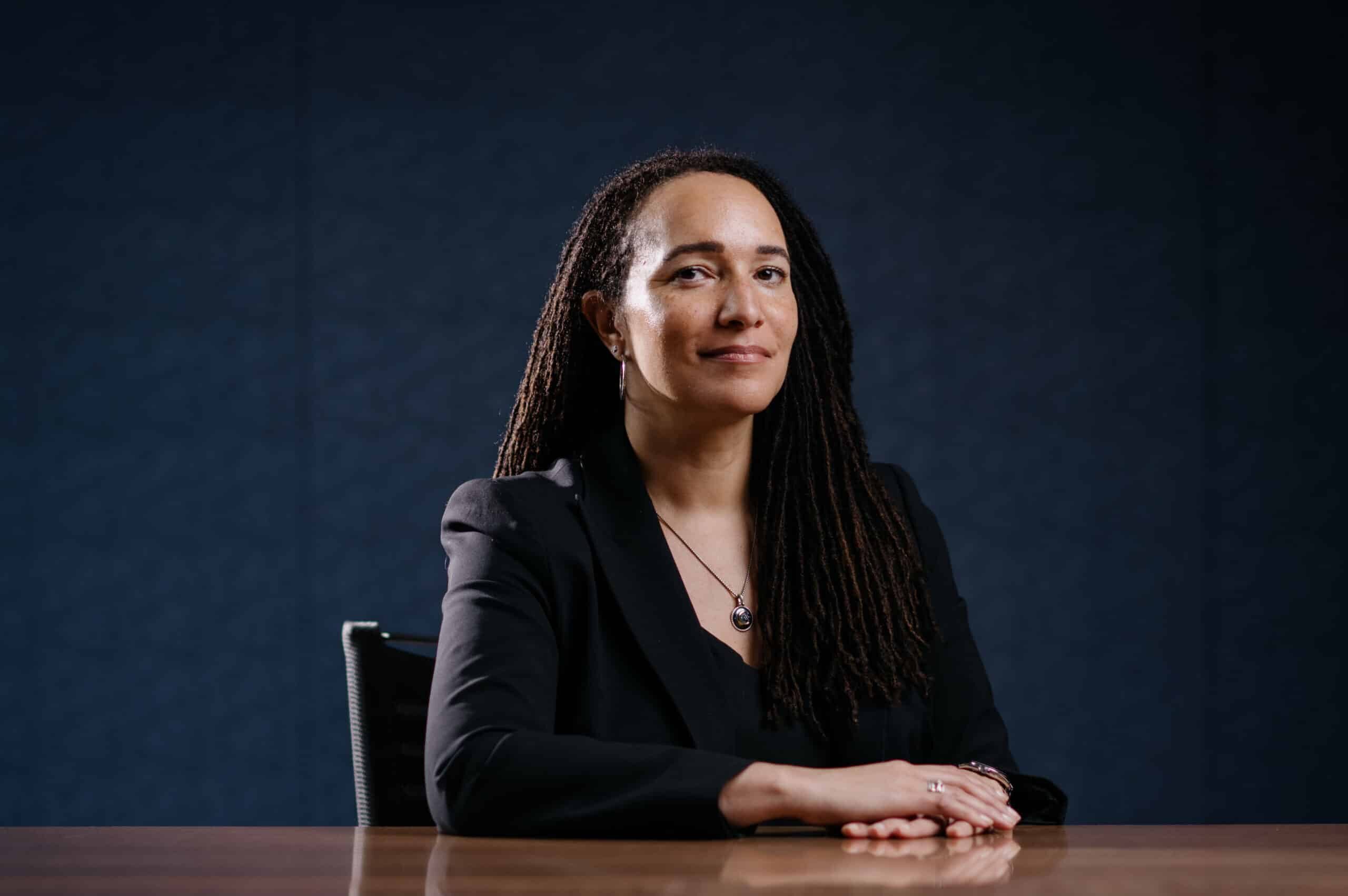By Dr. Tabbye Chavous, Vice Provost for Equity & Inclusion and Chief Diversity Officer
I have posted previously about the national attacks on diversity, equity, and inclusion (DEI) across a variety of public and private sectors, including higher education, attacks that are by and large ideologically and politically driven, not evidence based.
On Wednesday, Oct. 16, the New York Times published an article on DEI efforts at the University of Michigan (U-M) that was filled with misinformation, disinformation and, sadly, sexism. Before diving in further, I want to state up front that those of us who do DEI work – both at U-M and nationally – welcome thoughtful, critical questions about our work grounded in accurate data and evidence. Such inquiries make us more reflective, innovative, and effective.
This article was not that.
While I am not a journalist, as a professor it reminded me of the novice student writing a class paper who starts with a preconceived thesis on a topic, then looks only for the “evidence” that confirms the thesis, ignoring all evidence to the contrary. In my field (psychology), this is called confirmation bias. (And even new college students rarely exhibit this as egregiously as it was in this article).
How do I know that the fix was in? There are so many examples that it would take days to detail, so I’ll share just a few.
For one, before publishing the article, the reporter gave the university more than 130 questions to fact-check and 48 hours to do so, which we did with time to spare – including reaching out to numerous schools, colleges, offices, and units to ensure accuracy. In the final article, many of the fact checked items were blatantly ignored; an example is stating that students in computer science are required to take microaggressions quizzes (not true).
Similarly, the reporter cherry-picked research to support his narrative. An example is citing only an article that discounts the existence of microaggressions based on very thin analysis, when there are literally decades of theoretical and empirical scholarship that were ignored that show the reality and complexity of these experiences for people across many identity groups. So many other fact-checked inaccuracies were willfully included – from untrue descriptions of faculty hiring processes and recruitment and admissions work, as well as mischaracterizations of key programs.
For instance, while the reporter frames our DEI programs as primarily focused on race, he overlooks that much of the “quarter billion” U-M has invested in DEI over the past eight years (from a $12 billion annual budget) goes toward socioeconomic access and financial aid programs like the GoBlue Guarantee. This program has been key in recruiting students from across Michigan, particularly white students from rural counties.
Let me be clear — we can’t minimize the need to continue to pay attention to race and work for racial equity, but our definition of DEI is broad, and our investments go toward supporting campus members from all demographic and identity backgrounds.
The article is framed as representing the campus perspective on the follies of DEI, but the reporter states an interview group of 60 people total across students, staff, faculty, and administrators. This represents 0.06% of U-M’s population of 100,000 students and employees. This would not be problematic if the interviewees were selected systematically to reflect different schools, colleges, units, positions, and roles; but they were not. As a result the analysis is very skewed and reflects a narrow perception not necessarily held by a critical mass.
Similarly, the article raises many concerns around political bias. For example, the reporter cites the Heritage Foundation as a primary data source for validating assertions regarding the failures of DEI efforts. As many know, the Heritage Foundation is a political organization — not a research organization or think tank that uses empirical standards — and it is the architect of Project 2025, which is staunchly anti-DEI. However, in the article, the organization is presented as an objective and key research authority. Ironically, only a few weeks ago, the NYT discredited the Heritage Foundation for spreading deceptive videos about non-citizen voters. But, we should view this organization as a credible critic of DEI work, right?
Despite the article’s focus on the question of whether DEI “works” and the title thesis that it “went wrong,” the reporter neglected to focus on real data on real outcomes — from enhancing affordability and access for low-income and first-generation students, to strides we’ve made in enrollment of students of color – including Black, Latino, Asian — after the passage of Proposition 2 (the state amendment banning race- and gender-conscious admissions) that was empirically shown to negatively impact enrollment. The reporter also ignores our use of evaluation data from our initial DEI strategic plan (DEI 1.0) to develop larger efforts for enhancing disability accessibility and religious diversity and inclusion as a part of our current DEI 2.0 work, among many evidence omissions.
Instead, the reporter provided descriptions of incidents that are unrelated to any DEI program efforts and made causal claims about DEI (such as one faculty member’s experience of a minoritized student’s concern about the use of racial epithets in historical literature and texts, a type of situation that many skilled faculty routinely experience and navigate with sensitivity and rigor). Similarly, DEI programs are erroneously blamed for community engagement and activism in response to major national and international events tied to long-time societal inequalities, tensions and conflicts (such as George Floyd’s murder and the current war in Israel-Gaza).
Let me be clear: DEI work is not responsible for global societal challenges as some would like us to believe. To the contrary, DEI efforts are often part of the solutions to addressing these challenges.
Given my career of research on the positive development of Black youth, I was disheartened at the reporter’s use of an old and worn tactic – expressing a disingenuous concern about the representation and experiences of Black undergraduate students in order to make the case of why DEI doesn’t work and why these efforts should go away. (And interestingly, U-M’s progress in Black and Native American graduate enrollment and in undergraduate and graduate enrollment across all groups of color are fully ignored).
At U-M, we’re acknowledging the real and unique concerns of Black students (including anti-Black racism), and working to be responsive to them. For instance, we’re using data and evidence from our initial DEI strategic 1.0 plan along with national data to show factors underlying Black enrollment challenges and Black students’ distinct experiences of campus climate, and many leadership offices are collaborating with students to improve and advance a specific focus on Black student access and success as a part of our DEI 2.0 plan.
The progress we’ve seen from our efforts over the past decade (including increasing new Black enrollment by 13% over the past year alone and 87% over the past five years) is due to these collaborative efforts. That doesn’t mean we don’t have more to do. In contrast, those who seek to dismantle DEI offices and activities offer no alternative solutions and have no plans to use any “resources saved” to improve the lives of Black students or other minoritized communities. (In fact, when DEI programs have been dismantled, the resources are more likely to go to functions and groups other than minoritized ones).
So, let’s be very clear: those critics (like Heritage) who say they want to dismantle DEI work because they care about Black or minoritized students are gaslighting you.
On a personal note, the article was rife with sexist tropes, which many in our community noted and found offensive and antithetical to the values of DEI. Despite providing extensive information on my scholarly and professional background (including 26 years as a faculty member and almost two decades as an administrator prior to my current role), none of my credentials nor faculty title were mentioned, my marital status was referred to numerous times, and gendered language was used to describe my interactions and mannerisms, even though we talked by phone! Sadly we know that this type of minimizing and attempt to delegitimize is particularly likely to happen to women and women of color, especially those in leadership roles.
And those were just a few examples of many. I’ll conclude for now by noting that while the New York Times is unlikely to issue corrections to the inaccuracies we’ve called out, my silence is not an option. To quote noted journalist/educator Ida B. Wells “…the way to right wrongs is to turn the light of truth upon them.” Those of us committed to a more just university will rise above this political gamesmanship and fear-mongering, and continue to fight for truth. We will continue to fight for the University of Michigan to reach its full potential as a world-class and inclusive university.
I do not want this misguided “investigative” article (or rather opinion piece) that the Times decided to publish to denigrate the work of the many committed staff, students, faculty, alumni, and other partners that dedicate their energy to making a more just Michigan. I’m proud of the work we do every day to create more opportunities that weren’t there yesterday.
For those who fought so a journalist (like the author of the article) could be free to write whatever they wish free of political persecution, thank you. But I must also fight for, and represent those who are day in and day out working to make our university, and by virtue of that, our nation and society, more diverse, equitable and inclusive.


